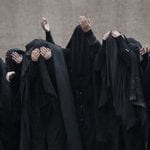 Technology
Technology  Technology
Technology  Humans
Humans 10 Everyday Human Behaviors That Are Actually Survival Instincts
 Animals
Animals 10 Animals That Humiliated and Harmed Historical Leaders
 History
History 10 Most Influential Protests in Modern History
 Creepy
Creepy 10 More Representations of Death from Myth, Legend, and Folktale
 Technology
Technology 10 Scientific Breakthroughs of 2025 That’ll Change Everything
 Our World
Our World 10 Ways Icelandic Culture Makes Other Countries Look Boring
 Misconceptions
Misconceptions 10 Common Misconceptions About the Victorian Era
 Mysteries
Mysteries 10 Strange Unexplained Mysteries of 2025
 Miscellaneous
Miscellaneous 10 of History’s Most Bell-Ringing Finishing Moves
 Technology
Technology Top 10 Everyday Tech Buzzwords That Hide a Darker Past
 Humans
Humans 10 Everyday Human Behaviors That Are Actually Survival Instincts
 Animals
Animals 10 Animals That Humiliated and Harmed Historical Leaders
Who's Behind Listverse?

Jamie Frater
Head Editor
Jamie founded Listverse due to an insatiable desire to share fascinating, obscure, and bizarre facts. He has been a guest speaker on numerous national radio and television stations and is a five time published author.
More About Us History
History 10 Most Influential Protests in Modern History
 Creepy
Creepy 10 More Representations of Death from Myth, Legend, and Folktale
 Technology
Technology 10 Scientific Breakthroughs of 2025 That’ll Change Everything
 Our World
Our World 10 Ways Icelandic Culture Makes Other Countries Look Boring
 Misconceptions
Misconceptions 10 Common Misconceptions About the Victorian Era
 Mysteries
Mysteries 10 Strange Unexplained Mysteries of 2025
 Miscellaneous
Miscellaneous 10 of History’s Most Bell-Ringing Finishing Moves
10 New Religions That Were Mercilessly Crushed
Religious movements can change the face of the world seemingly out of nowhere, causing the rise and fall of empires. They always challenge the status quo. But not all faiths have survived the inevitable clash with orthodoxy.
10Taki Onquoy
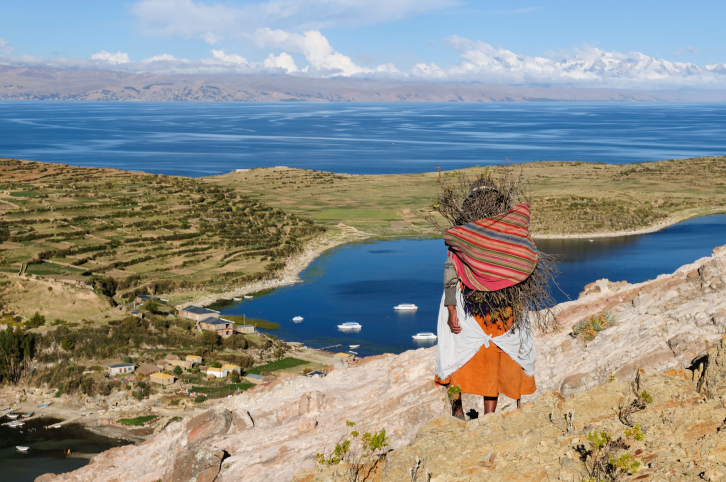
Thirty years after the Spanish conquest of the Inca, a major religious revolt erupted against European rule, rejecting Catholicism in favor of traditional Andean gods. The movement was called Taki Onquoy (“dance of disease”) due to the ecstatic dancing of its followers. Many of the rebels were non-Inca, who believed that while the Spanish and their Christian god had helped topple the Inca Atahualpa, the time had come to overthrow them as well.
Taki Onquoy worshipers venerated the pre-Inca Andean huacas, spirits inhabiting mountains, rivers, and shrines. In a break from tradition, followers of the new religion believed that these spirits now possessed the bodies of believers, granting them divine revelations. They believed the huacas had once defeated the Christian God, but the Spanish had turned the tables with their invasion, and now the huacas would flip things around again by spreading disease among the interlopers and drowning their cities beneath the ocean.
The movement was in contact with the Inca leader Tupac Amaru, still fighting the Spanish from his stronghold of Vilcabamba, but the movement drew its strength from the old regional deities, whose worship the Inca had sporadically tried to repress. Rather than the Inca state god Viracocha, the most venerated huacas were Titicaca and Pachacamac, who together formed the axis of the Sun’s diurnal path. The movement’s geographical extent and revolutionary themes of pan-Andean unity terrified the Spanish. However, the old ethnic and class divisions were not easily erased, and many natives defected to the Spanish out of fear or self-interest. The movement was largely crushed following a massive campaign by Cristobal de Albornoz, but the Spanish were forced to keep repressing the faith well into the 17th century.
9Ak Jang

In 1904, 12-year-old Chugul, adopted daughter of Siberian herdsman Chet Chalpanov, reported seeing a figure on a white horse, whom she believed to be the legendary Oirot Khan, ruler of the Altai people. She said Oroit Khan had been sent by the supreme deity of the Kalmyk people, Burkhan, to establish a new faith promising a return to ancient greatness. Combining elements of shamanism, Christianity, and Buddhism, it preached adherence to a strict code. Followers were supposed to reject all things Russian (they were allowed to dispose of money to Russian merchants before cutting off trade relations), cease contact with Russians and baptized Altaians, cease shamanistic practices, and wear only blue and yellow. The movement was called Ak Jang (“the White Faith”), as opposed to the “black faith” of shamanism, and led to great gatherings of Altai people around sacrificial altars, where shamanistic trappings were burned in honor of the god Burkhan.
The movement was oppressed by the Czarist regime, and acquired a pro-Japanese flavor after the disastrous defeat of the Russian armies in the 1905 Russo-Japanese War. After the 1917 Revolution saw the collapse of government authority, the Altai region was left effectively independent, with the Soviets tolerating the Burkhanists thanks to their anti-Czarist agenda. Altaian jarlykchy (spiritual leaders) were even allowed to pray at Bolshevik party meetings.
This tolerance changed to persecution after 1933, due to fears of Oirot nationalism, with the Soviets denouncing the religion as a conspiracy of “Chinese merchant capitalists” and the “Mongol-Lamaist bureaucracy.” Concerted efforts to Russify the region and indoctrinate the inhabitants with Soviet atheism saw the decline of the religion into a vague folk mythology passed on by word of mouth. With increased liberalization, a revival of sorts began in the Gorbachev era, and the faith has re-emerged in the Russian Federation’s Republic of Altai.
8Donghak
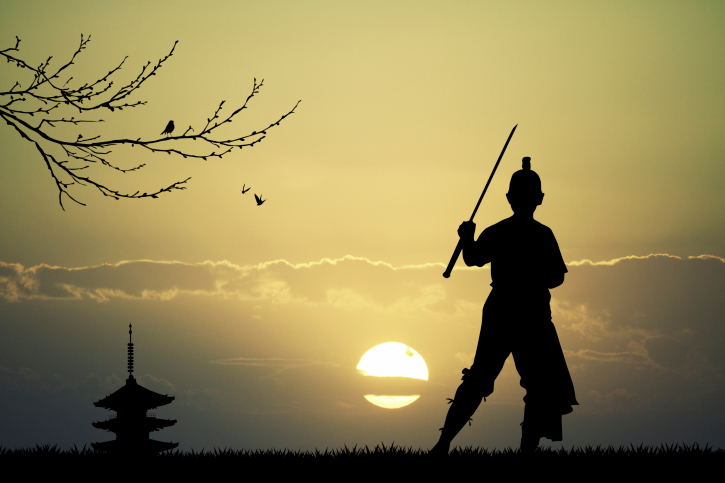
Modern Korea’s first new religion, Donghak was founded in the 1860s by a young scholar named Choe Je-u. While wandering through the countryside on a spiritual pilgrimage, Choe heard a voice proclaiming: “Do not be afraid. Mankind calls me the Supreme Sangje. I sent you to save mankind.”
Given a talisman known as the Elixir of Immortality, Choe founded Donghak (“Eastern Learning”), a blend of neo-Confucianism, traditional shamanism, folk religion, and Taoism. It stood opposed to Seohak (“Western Learning”), referring to Roman Catholicism, which was illegal but still quite popular at the time. Choe taught that Sangjenim, Lord of the Universe, would soon incarnate in this world and open a gateway to heaven, which would coincide with humanity suffering a mysterious disease. It offered a future of unity between Heaven and Earth and equality for all men and women.
In a cruel piece of judicial irony, Choe Je-u was eventually arrested, accused of being a secret Catholic, and executed. He was succeeded by his nephew, Choe Si-yeong, who formed the institutional framework of the religion. The movement resulted in a peasant uprising in 1894, which began over issues of rice taxation but expanded into an armed rebellion that attracted progressive nobles, intellectuals, and nationalists. Armed with bamboo spears, swords, and stolen muskets, the Donghak peasant armies marched under yellow banners reading “sustain the people and provide for the people.” Alarmed, the Joseon government suppressed the movement with modern weapons and the help of Japanese troops, laying the foundation for Japanese annexation of Korea.
7Qarmatians
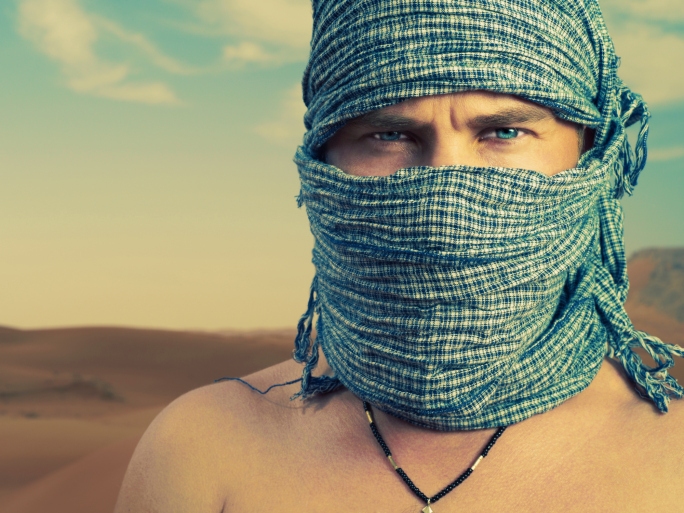
Emerging in the late ninth century, this offshoot of Shia Islam created one of the first communistic societies to rule over a large area. The sect advocated a form of Ismailism, believing that the sixth imam Jafar Al-Sadiq had chosen his son Ismail ibn Jafar to succeed him, with the imamate then passing to Ismail’s son, Mohammad al-Maktum. After Mohammad’s death, the movement split into two rival groups: those who believed the imamate passed to Ubayd-Allah Mahdi, founder of the Fatimid dynasty, and those who refused to believe that Mohammad had died at all, believing he would reappear as the Mahdi and bring justice to the world.
The second group soon came to be dominated by a charismatic preacher known as Hamdan Qarmat. (Qarmat means “he of the two red eyes” in Aramaic, while a similar Arabic word means “to write in extremely small letters.”) The sect initially had a hidden base in Iraq known as Dar al-Hijrah (“the House of Emigration”), but the decline of the Abbasid Caliphate allowed them to expand and form their own state in Bahrain and eastern Arabia.
The Qarmatians were a revolutionary movement of dispossessed peasants who sought to topple the traditional power structures of the Muslim world. Their exact belief system is not completely clear, but it appears to have borrowed heavily from Greek, Persian, and Indian philosophy. Their society was egalitarian, with communal property ownership, an absence of taxes or tithes, and even interest-free loans and free grain milling provided by the state. They financed all this through raiding, taxing non-Qarmatians, and extorting protection money from trade caravans.
The sect’s most famous action came in A.D. 930, when they raided the holy city of Mecca and stole the Black Stone of the Ka’aba. They returned it in 951, broken into seven pieces (it was originally broken into three, and they may have broken it further to reflect the ideology of the seven imams). The Stone was tossed into the mosque in Kufa with a mysterious note: “By command we took it, and by command we return it.”
Qarmatian morale suffered after they choose a young Persian as ruler, believing him to be the new Mahdi. He turned out to be a disastrously bad choice, engaging in debauched public ceremonies, denouncing the prophets, and attempting to revive Zoroastrian fire worship. His reign only lasted 80 days, at which point the sect “had no choice but to have him killed.” From the late 10th century, the Qarmatians suffered numerous reversals as the Abbasids reasserted their power and eventually lost control of Bahrain in 1077, after which they slowly declined and were absorbed into other sects.
6Chupu
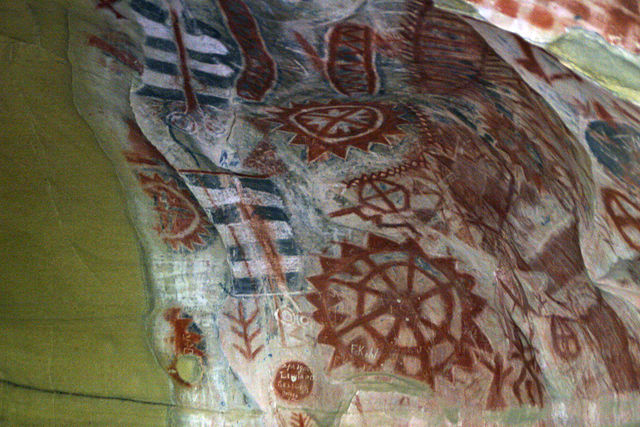
The first major recorded messianic movement in California emerged among the Chumash tribe in 1801, centered around the earth goddess Chupu. As pneumonia and pleurisy epidemics raged at the Mission Santa Barbara, a young female convert claimed that the goddess had visited her in a dream to warn that any Chumash who agreed to be baptized would die, while those who had already been baptized would die unless they renounced their conversion and returned to the worship of Chupu. The goddess also threatened death to anyone who told the missionaries about the dream. Water called “Tears of the Sun” was used to cancel the effects of Christian holy water, and the movement spread quickly throughout the Chumash settlements. This caused great consternation among the Franciscan missionaries, who decried the dreamer as a witch and forced her to publicly recant.
Though the movement was quickly suppressed, underground worship of Chupu continued. In 1824, the appearance of a twin-tailed comet was interpreted as a sign and an armed rebellion soon broke out in response to the beating of a recent convert. Seizing the La Purisima mission, the Chumash formed a separatist society free from the strict rules of the missionaries, but a siege by Mexican troops forced them to surrender. The Chumash were forced to chose between returning to Franciscan domination, or relocating to live among the free Yokut people in the north.
5Babism
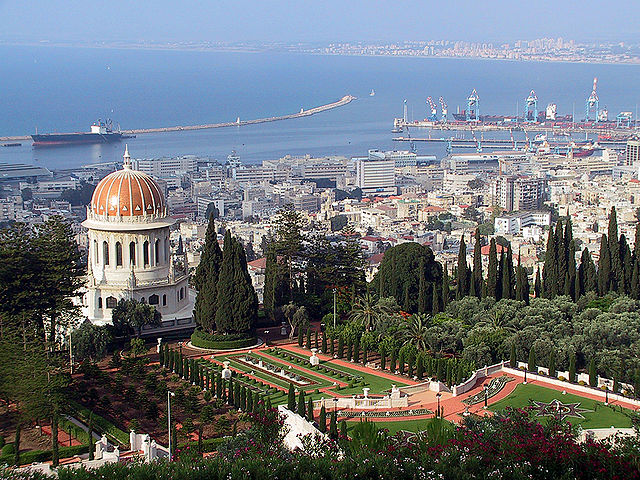
Babism began in 19th-century Iran, based on the teachings of Sayyed Ali-Mohammad Shirazi, known as the Bab. It emerged from Sheikhism, a sect of Shia Islam which taught that the hidden twelfth imam would choose a follower to serve as the Bab, or Gate, for communication with his followers. Members of the Sheikhi sect would wander through jungles and wastelands in search of the Hidden Imam, and Ali-Mohammad claimed to have found him, proclaiming himself as the Bab. He gathered a group of disciples around him, including the female preacher Qorrat al-Ayn, who shocked everyone by appearing unveiled, and who was believed to be the reincarnation of the prophet Muhammad’s daughter, Fatima.
The Babists were highly anti-clerical and believed in a new revelation that would supersede the Koran and Islamic law. Babist teachings of jihad diverged from Islam, calling for the destruction of holy places of previous religions, the conversion of the entire Shia population of Iran to the new faith, and “the universal slaughter of all save those who believed and were faithful.” These beliefs led to outbreaks of violence in the 1840s and 1850s, which were suppressed by government troops. The Bab himself was captured and sentenced to die in 1850, although the bungling firing squad merely managed to sever the rope binding him, and he nearly escaped before being re-captured and successfully executed on the second try.
After the Bab’s death, the movement split. A faction followed Mirza Husayn-‘Ali Nur, who rejected the violence and militancy of Babism and founded the Baha’i faith. The remaining Babists followed his brother, Mirza Yahya Nuri, who called himself the “Dawn of Eternity,” but they were unable to stay organized. Modern Azali Babists are an insular, secretive group numbering no more than a few thousand.
4Joachimites
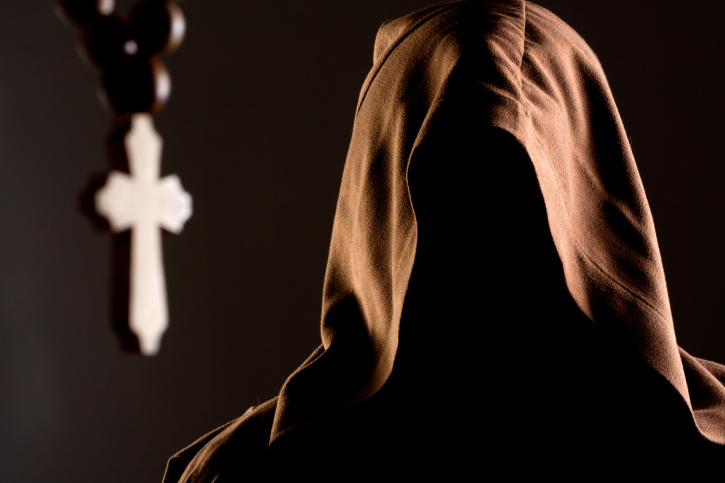
Joachim of Fiore was an Italian mystic who claimed to have had a vision during a pilgrimage to the Holy Land revealing that history was divided into three periods: the Age of the Father (which lasted from Creation to the birth of Jesus Christ), the Age of the Son (which lasted from Jesus’s lifetime to Joachim’s era), and the Age of the Spirit (which would probably commence during his own lifetime). The final age would see the appearance of an “Eternal Gospel,” the conversion of the Jews, the fall of the Roman church, and the rise of a “Spiritual Church” without priests, sacraments, or theology.
While Joachim himself remained respected throughout his lifetime, his ideas soon became linked with radical tendencies among the Franciscans. His followers began to see him as a messiah for the new age and believed his writings themselves were the “Eternal Gospel” he had promised. The Joachimites believed that the hierarchical church would soon be replaced by an era of love and freedom. One group, the Fraticelli, identified Pope John XXII as the Antichrist. Unsurprisingly, the Catholic Church condemned such ideas and many Joachimites were excommunicated or suffered fatal interest from the Inquisition.
3Nakaidoklini’s Movement
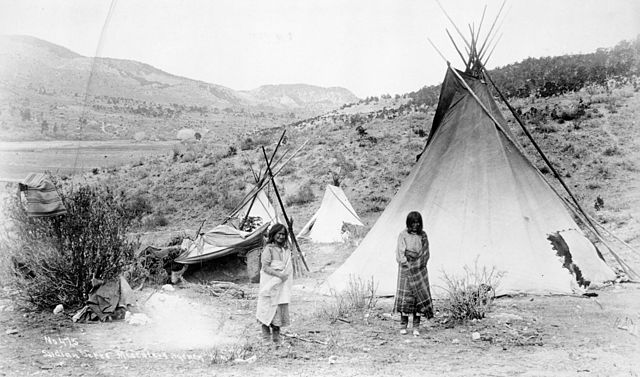
In 1881, a religious movement arose among Arizona’s White Mountain Apache. The catalyst was a prophet by the name of Nakaidoklini, who claimed that he could communicate with the afterlife and preached that dead Apache warriors would rise from the grave to drive the Americans from the land. He also claimed that if he was given enough horses and blankets, he would resurrect two deceased chiefs. (He eventually blamed his failure on the presence of whites on the land.)
These teachings disturbed J.C. Tiffany of the San Carlos Apache Indian Agency, who sent soldiers after Nakaidoklini with orders that he be “captured or killed or both.” Nakaidoklini initially submitted to arrest, but the soldiers found themselves followed by Apaches in war paint. A skirmish broke out when the American commander shouted at them to move back. The US army’s own Apache scouts also opened fire on the soldiers, while Nakaidoklini was shot in the head by his guard during the battle (accounts vary as to whether he was trying to escape or was executed to demoralize the Apache). Nakaidoklini’s followers attacked Fort Apache soon after but were repulsed and eventually defeated at the Battle of Big Dry Wash, the last major military engagement in Arizona. Nakaidoklini’s movement failed, but it was a precursor to the Ghost Dance movement that arose among the Sioux in the 1890s.
2The Thuggee
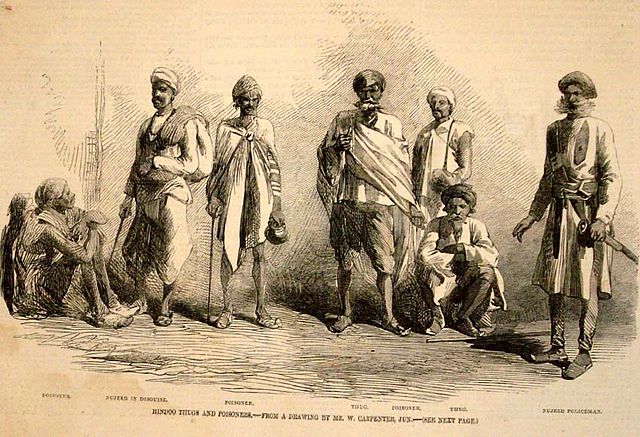
Beginning in the 13th century, this religious sect of assassins in northern India worshiped the goddess Kali through the ritual murder of travelers. Often seen as a violent Hindu sect, the Kali cult paid no attention to orthodox notions of caste, and many Thuggee were originally Muslim. Membership in the cult was all-male and passed down through families, but outsiders were also able to join. The cult apparently believed that Kali had endowed them with superior intelligence and cunning in order to destroy human beings, with the Thugs rewarded for their efforts with plunder. In one version of the story, the Thugs got their start when Kali faced off against a terrible demon. Every drop of the demon’s blood created another demon as soon as it touched the ground, so Kali created two humans to bloodlessly strangle the demons instead.
The Thuggee would infiltrate traveling caravans, waiting for the right moment to lead away an unwary individual to be sacrificed. Over time, the religious aspect of the Thuggee apparently declined, with some groups becoming more like a criminal network than a cult. The movement was finally wiped out by the British in the 19th century. Thuggee doctrines forbade killing Europeans and the Thuggee viewed the crackdown as a sign of Kali’s displeasure, with many going willingly to the gallows. But some were reported to have taken the opportunity to accuse innocent men of being Thugs, sacrificing them to their goddess with a British noose as proxy.
1White Lotus

Emerging in the 10th century as an outgrowth of popular Taoist and Buddhist beliefs, the White Lotus was characterized by its belief in the Eternal Mother, creator of mankind, and Her emissaries, through whom salvation could be achieved. They participated in a popular uprising against the Song Dynasty in 1281, and reformed in the 14th century as a secret society opposed to the Yuan. A White Lotus rebellion known as the Red Turban Uprising helped Zhu Yuanzhang, the founder of the Ming dynasty, capture Beijing, but he turned against the group once he had achieved imperial power. Under the Ming and the Qing, the movement existed in small, secret congregations and its doctrines were spread through baojuan (“precious volumes”), small booklets containing stories and poems.
The White Lotus provided an alternative to the organized state religion, offering a vision of imminent salvation and divine apocalypse. They believed the Eternal Mother had sent down two emissaries: the Lamp-Lighting Buddha, who ruled the world for 108,000 years from a five-leafed azure lotus throne, and the Sakyamuni Buddha, who rules from a seven-leafed red lotus platform. He would one day be succeeded by the Maitreya Buddha, ruling from a nine-leafed white lotus platform, whose arrival would cause chaos in heaven and Earth. The Sun and Moon would change course, stars would dance in the sky, and a black wind would scour the Earth at the dawn of the new era, the Paiyang kalpa.
It was a diverse movement, with some groups emphasizing scripture, while others recited mantras and did yogic meditation. As time went on, breathing techniques and martial arts were incorporated, and the White Lotus became associated with anti-Qing Triads. The sect’s largest revolt was in the 18th century and lasted nine years, spanning five provinces and forcing the Qing to arm the peasantry in order to put it down. Later, the Boxers attacked those accused of following White Lotus teachings, which they believed possessed evil magical powers. The society was largely dead by that stage, although remnants of its belief system still linger in Taiwan and southeast Asia.
David Tormsen sits on an 11-petaled obsidian lotus throne.


